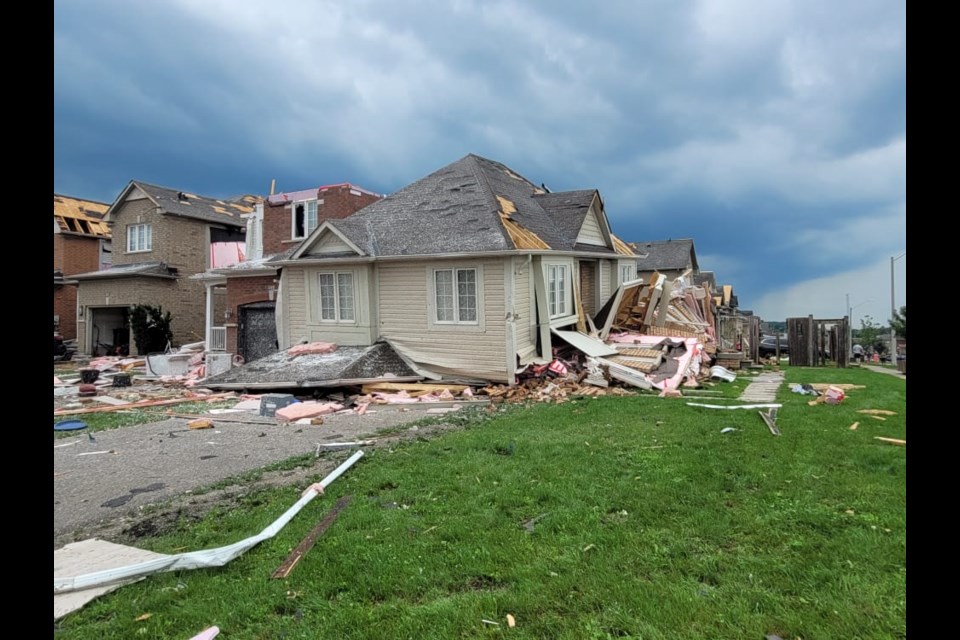Residents of the southeast Barrie neighbourhood evacuated from their homes after Thursday’s tornado are being allowed to return to their homes as fast as the city can process the engineering reports, say city officials.
And two of the 10 people taken to the Royal Victoria Regional Health Centre (RVH) and were admitted have since been released.
Of the 75 houses that have been issued unsafe orders, eight were given the go-ahead to return to their homes Sunday evening. More are expected to follow as the engineering assessment reports are filed with the city.
But just how many of those homes that will have to be torn down and replaced won’t be determined until full assessments are completed, said Andrea Miller, the city's general manager of infrastructure and growth management, in an emailed response to BarrieToday.
Although it’s a good bet that some, including the house that appears to be pushed off its foundation, will likely have to be rebuilt.
Unsafe orders, she added, means that they’re structurally faulty or in a condition that could be hazardous, according to the Building Code Act, but are not necessarily uninhabitable.
While a wind engineer with Western University’s Northern Tornadoes Project found that some of the roofs weren’t attached properly to the walls, Miller said houses are not required to be designed to withstand tornadic winds.
“It is unreasonable to expect a roof to resist tornado-strength winds and resulting forces,” she responded in the email. “Some of the winds were strong enough to lift and move the entire weight of a house, so it is not surprising that roofs were removed in their entirety.
“Also, once a roof is compromised, the effects of the loading it is subjected to becomes even more damaging," Miller added.
Suggestions that the building code wasn’t followed “casts a misleading shadow” on what she describes as the excellent work of local registered building professionals as well as the broader building industry.
“We want the people of Barrie to know that we take the safety of all residents seriously and every effort is made to ensure compliance with the building code,” she wrote.
But, Miller added, the work being done by the Northern Tornadoes Project researchers will be valuable as the province considers updates to the building code, particularly since Barrie, especially the southern portion of the municipality, tends to attract more severe weather, having experienced three EF2 or greater tornadoes in the past 36 years.
The city supports sharing the results of the project’s research with the province and national code researchers to work toward improvements to the code, Miller said.
“It is clear a tornado imposes loads much more severe than those specified in the building code. The building industry (including designers, engineers, building officials and code researchers and writers) recognize this,” she wrote.



